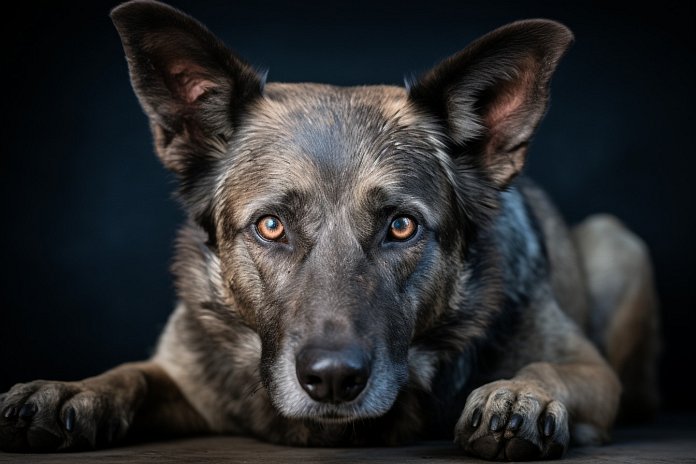
We all want our dogs to be happy, and they usually are. Dogs have a naturally positive and happy attitude, which is why they make great service or therapy animals. However, it is possible for dogs to be unhappy or even depressed. The causes of dog unhappiness can vary, but it’s important to understand what determines a dog’s happiness and how to recognize signs of unhappiness. In this guide, we will discuss canine depression and unhappiness, including signs to look out for and ways you can help your dog.
Signs that Your Dog Might Be Unhappy:
Dogs can experience unhappiness for various reasons, similar to humans. They may feel upset due to a tragic event, changes in their routine, or simply feeling down. Some signs that your dog might be depressed include decreased enthusiasm, a lack of interest in favorite activities, withdrawal, excessive licking or biting, increased shedding, avoidance of eye contact, and changes in behavior such as aggression or irritability.
Body Language:
Your dog may be displaying signs of unhappiness through their body language. Look out for whining, cowering, chewing, howling, scratching, drooping ears, weakness, aggression, anxiety, excessive licking, avoidance, lack of interest in playing or running, hiding, cowering, and sleep disturbances.
Historic Causes of Doggy Depression:
There are many potential causes of doggy depression, similar to humans. Dogs can become depressed after experiencing a tragic event, such as the loss of a companion or owner. They can also become unhappy when they receive less attention or pick up on the grief and depression of those around them. Dogs often mimic their owner’s attitudes and moods.
The Science of Doggy Depression:
Understanding how a dog’s brain works is challenging, and it’s difficult to determine if their depression is similar to ours. Dogs do experience mood swings and behavior changes, but it can be challenging to identify the exact causes. Consulting with a dog behaviorist or veterinarian is the best way to determine a clinical diagnosis.
How to Train Your Dog to Deal with Depression:
While doggy depression can sometimes resolve on its own, there are ways you can help your dog through it. Ensuring your dog maintains a healthy eating and exercise routine can physically and mentally benefit them. Stick to a regular schedule and provide your dog with things to look forward to. It’s important to give your dog positive attention, but be careful not to inadvertently reward their depression. Instead, reward positive behaviors and traits with treats and attention.
By understanding the signs of unhappiness in dogs and knowing how to help them, you can ensure your furry friend’s well-being and happiness.
“Remember, a happy dog is a healthy dog – don’t let unhappiness go unnoticed.”

Tips & Things to Know
1️⃣ Dogs can experience unhappiness and even depression, which can manifest in various ways including lack of enthusiasm, increased aggression, and physical signs such as excessive licking and biting. Changes in routine or a tragic event can often trigger these feelings.
2️⃣ Pay attention to your dog’s body language for signs of unhappiness, such as whining, cowering, excessive chewing or howling. Other signs can be a lack of interest in playing or running around, hiding, or changes in their sleep cycle.
3️⃣ If your dog is showing signs of depression, it’s important to maintain their regular eating and exercise routine, provide them with positive attention and rewards for happy behaviors, but avoid rewarding negative behaviors such as lack of appetite or inactivity. Always consult with a vet or dog behaviorist for a clinical diagnosis and advice on how to best support your dog.
Frequently Asked Questions, Answered ✅
1. Can dogs experience depression and unhappiness?
– Yes, dogs can experience depression and unhappiness, although it is not very common.
2. What are some signs that indicate that a dog might be unhappy?
– Signs of a dog’s unhappiness can include decreased energy and enthusiasm, withdrawal and hiding, loss of interest in favorite activities, excessive licking or biting, increased shedding, avoidance of eye contact, and changes in behavior such as aggression or irritability.
3. How can I determine if my dog is unhappy based on their body language?
– Some body language cues that indicate a dog’s unhappiness include whining, cowering, chewing, howling, scratching, drooping ears, weakness, aggression, anxiety, excessive licking, avoidance, lack of interest in playing or running around, hiding or cowering, and interruptions in their sleep cycle.
4. What are some common causes of doggy depression?
– Common causes of doggy depression can include the loss of an animal friend or the death of an owner, receiving less attention, picking up on the grief and depression of their owners, and major changes in routine or environment.
5. How can I help my dog deal with depression?
– To help a dog deal with depression, it is important to maintain a healthy eating and exercise regimen, stick to their scheduled routine as much as possible, provide positive attention without rewarding their depression, and consult with a behaviorist or vet for a clinical diagnosis and guidance.